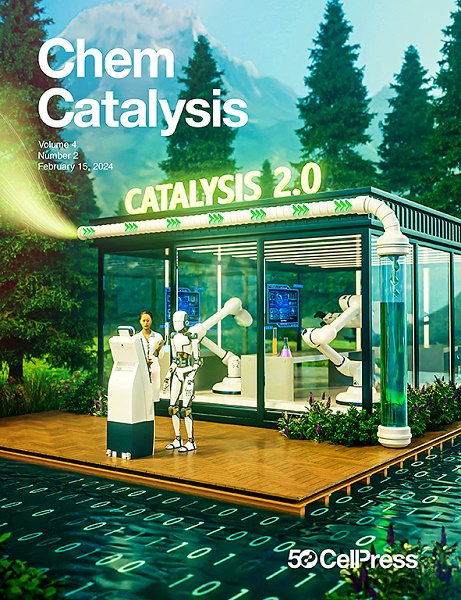芳烃电还原驱动的碳氢官能化反应
IF 11.6
Q1 CHEMISTRY, PHYSICAL
引用次数: 0
摘要
芳烃的C-H键功能化被认为是有机化学中最引人注目的合成方法之一,在过去的几十年里在各个学科中得到了广泛的发展,包括过渡金属化学、光化学、酶化学和电化学。然而,主要的焦点集中在氧化驱动的芳烃碳氢键活化上,而对还原驱动的芳烃碳氢键功能化的关注有限。电化学作为一种环保、经济的技术,具有可定制的氧化还原电位,提供了一种有吸引力的替代方案,消除了对昂贵的金属和酶试剂以及有毒氧化还原剂的需求。这一观点探讨了芳香族化合物的还原驱动的C - h键功能化反应,使C(sp2) -C (sp2), C(sp2) -C (sp3)和C(sp2) -X键的形成。它突出了这种方法所固有的挑战和机遇,并提供了对未来发展方向的见解。本文章由计算机程序翻译,如有差异,请以英文原文为准。

Electroreductively driven C–H functionalization of arenes
C–H bond functionalization of arenes, considered one of the most compelling synthetic methods in organic chemistry, has seen extensive development in the past few decades across various disciplines, including transition metal chemistry, photochemistry, enzyme chemistry, and electrochemistry. However, a predominant focus has been on the oxidation-driven activation of arene C–H bonds, with limited attention given to reduction-driven arene C–H bond functionalization. Electrochemistry, as an environmentally friendly and cost-effective technique with customizable redox potentials, offers an attractive alternative that eliminates the need for expensive metal and enzyme reagents, as well as toxic redox agents. This perspective explores reduction-driven C–H bond functionalization reactions of aromatic compounds, enabling the formation of C(sp2)–C(sp2), C(sp2)–C(sp3), and C(sp2)–X bonds. It highlights the challenges and opportunities inherent in this approach and provides insights into future development directions.
求助全文
通过发布文献求助,成功后即可免费获取论文全文。
去求助
来源期刊
CiteScore
10.50
自引率
6.40%
发文量
0
期刊介绍:
Chem Catalysis is a monthly journal that publishes innovative research on fundamental and applied catalysis, providing a platform for researchers across chemistry, chemical engineering, and related fields. It serves as a premier resource for scientists and engineers in academia and industry, covering heterogeneous, homogeneous, and biocatalysis. Emphasizing transformative methods and technologies, the journal aims to advance understanding, introduce novel catalysts, and connect fundamental insights to real-world applications for societal benefit.

 求助内容:
求助内容: 应助结果提醒方式:
应助结果提醒方式:


